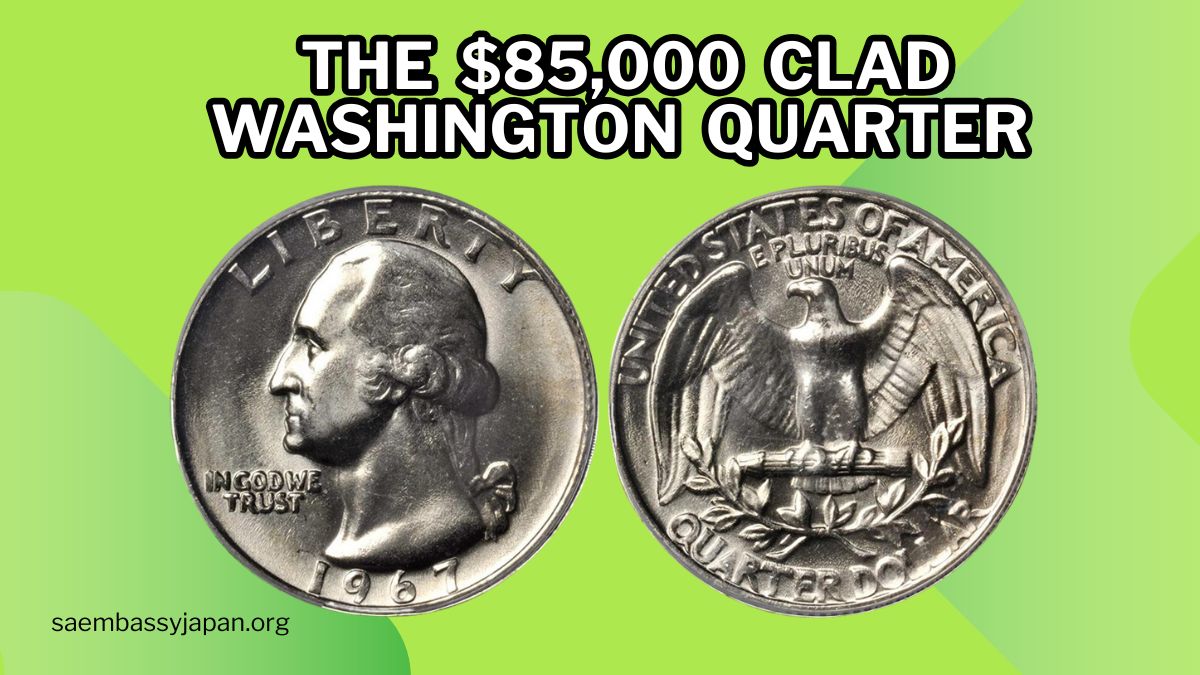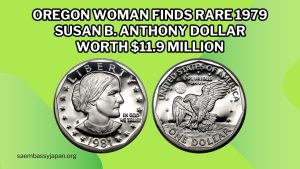Imagine discovering that a simple 25-cent coin tucked away in your change jar is worth a staggering $85,000. This isn’t a numismatic fantasy but a reality for certain rare Washington quarters.
Understanding the history, unique features, and market values of these coins can transform casual coin collecting into a lucrative endeavor.
The Genesis of the Washington Quarter
The Washington quarter was first minted in 1932 to commemorate the 200th anniversary of George Washington’s birth. Designed by sculptor John Flanagan, the coin’s obverse features a left-facing portrait of Washington, while the reverse showcases an eagle with outstretched wings perched on a bundle of arrows, framed by olive branches.
Initially composed of 90% silver and 10% copper, the coin’s composition shifted in 1965 to a copper-nickel clad due to rising silver prices.
The Transition to Clad Composition
In 1965, the U.S. Mint transitioned from silver to a copper-nickel clad composition for quarters, commonly referred to as “clad” quarters. This change was primarily driven by the escalating cost of silver, making it impractical for everyday coinage.
The clad quarters consist of a pure copper core sandwiched between two layers of cupronickel (75% copper and 25% nickel), giving the coins a similar appearance to their silver predecessors but with distinct physical properties.
The 1932-D Washington Quarter: A Hidden Gem
One of the most coveted coins among collectors is the 1932-D Washington Quarter. Minted in Denver, this coin had a relatively low mintage of 436,800 pieces, contributing to its rarity.
What makes this coin particularly valuable is its condition. Coins graded in Mint State (MS) conditions, especially those at MS66 or higher, have fetched impressive sums at auctions.
Key Features of the 1932-D Washington Quarter:
- Mint Mark: “D” located on the reverse side beneath the eagle’s tail feathers.
- Composition: 90% silver, 10% copper.
- Weight: 6.25 grams.
- Diameter: 24.3 mm.
Notable Auction Sales:
- In 2001, a 1932-D Washington Quarter graded MS66 was sold for $89,125.
- Another example in similar condition fetched $82,250 in 2015.
These figures underscore the coin’s significant appreciation over time, making it a prized possession for numismatists.
Factors Contributing to High Value
Several factors elevate the value of certain Washington quarters:
- Low Mintage Numbers: Coins produced in limited quantities are inherently rarer, increasing their desirability among collectors.
- Mint State Condition: Coins that have remained uncirculated and exhibit no wear are graded higher and command premium prices.
- Historical Significance: Coins from inaugural minting years or those marking significant events often hold additional value.
- Mint Errors: Anomalies during the minting process, such as double strikes or misprints, can make coins unique and highly sought after.
Summary of Notable Washington Quarters and Their Values
| Year | Mint Mark | Composition | Grade | Estimated Value |
|---|---|---|---|---|
| 1932 | D | 90% Silver | MS66 | $85,000 |
| 1932 | S | 90% Silver | MS66 | $46,000 |
| 1948 | None | 90% Silver | MS68+ | $43,250 |
| 1964 | D | 90% Silver | MS68 | $38,500 |
| 1939 | S | 90% Silver | MS68 | $30,000 |
Note: Values are approximate and can vary based on the coin’s condition and market demand.
Frequently Asked Questions (FAQs)
1. What makes the 1932-D Washington Quarter so valuable?
The 1932-D Washington Quarter is highly valued due to its low mintage of 436,800 coins and its historical significance as the first year of the Washington quarter series. Coins in exceptional condition (Mint State) are particularly sought after by collectors.
2. How can I determine the mint mark on my Washington quarter?
For quarters minted between 1932 and 1964, the mint mark is located on the reverse side, beneath the eagle’s tail feathers. For coins minted from 1968 onwards, the mint mark is located on the obverse side, to the right of George Washington’s ponytail.
3. How do I know if my quarter is in Mint State condition?
A coin in Mint State (MS) condition shows no signs of circulation. Key indicators include:
- Sharp details with no flattening of design elements.
- Original mint luster still intact.
- No visible scratches or wear.
4. Can I find a valuable Washington quarter in circulation today?
Yes, though rare, it’s still possible. Quarters from 1999–2008 (State Quarters Program) with mint errors, or pre-1965 silver quarters occasionally surface. Check pocket change, coin rolls, and estate sales for hidden gems.
Finding an $85,000 Washington quarter in your change jar may seem like a long shot—but it’s not impossible. The 1932-D Washington quarter, with its combination of low mintage, historical significance, and Mint State rarity, remains a prized treasure for collectors.





My name is Betty Whitley I have the 1776-1976 coin an I am trying to sell it.